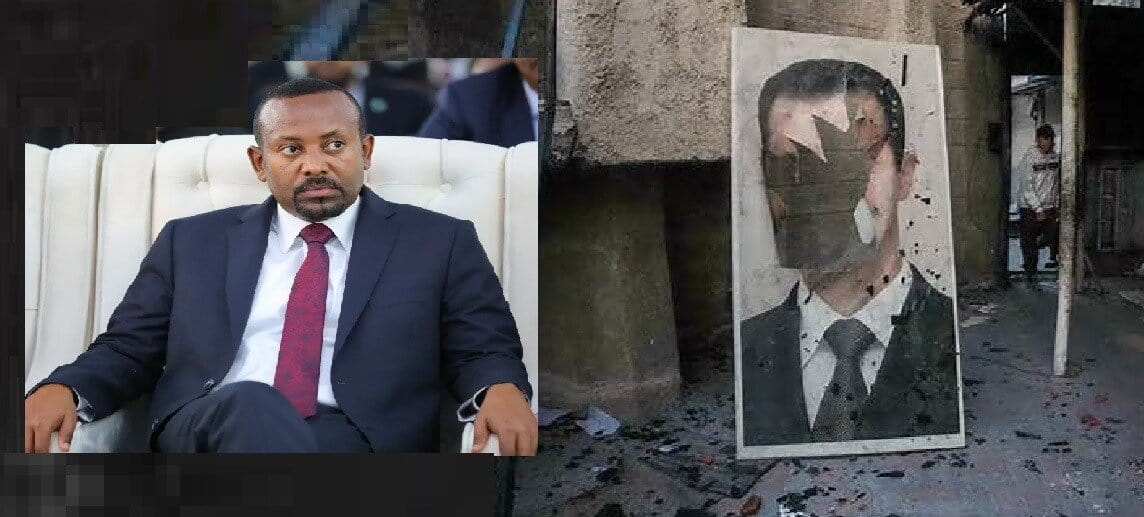 CNN — At least 200 civilians are believed to have been killed in Ethiopia’s Oromia region by rebel group the Oromo Liberation Army (OLA) on Saturday, according to reports, a rights group and local officials. Most of the victims are from the Amhara ethnic group, a police officer said.
CNN — At least 200 civilians are believed to have been killed in Ethiopia’s Oromia region by rebel group the Oromo Liberation Army (OLA) on Saturday, according to reports, a rights group and local officials. Most of the victims are from the Amhara ethnic group, a police officer said.The attack on the town of Gimbi was connected to fighting between government forces and the OLA, according to a statement from the Ethiopian Human Rights Commission (EHRC). The EHRC told CNN Monday that the assault has left “scores of people injured, villages destroyed, and entire communities traumatized.”
The OLA – which last year aligned with Tigrayan rebel forces against Ethiopia’s federal government in the country’s protracted conflict – has denied all the allegations. OLA spokesman Odaa Tarbii said Sunday that the “regime” of Ethiopia’s Prime Minister Abiy Ahmed “is again blaming the OLA for atrocities committed by its own retreating fighters.”
The rebel group has been designated as a terror organization by the Ethiopian government, and it is frequently accused of attacking civilians and targeting ethnic Amharas.
This incident is among the worst atrocities to hit the country since fighting broke out in Ethiopia’s northern Tigray region in 2020, when Abiy’s government and its allies from the neighboring Amhara region tried to suppress a rebellion by the Tigray People’s Liberation Front (TPLF).
The TPLF dominated Ethiopia’s government prior to Abiy’s rise to power in 2018.
The ensuing civil war has seen both sides carry out atrocities, according to human rights groups, and risks splitting the ethnically diverse country. There is no suggestion TPLF was involved in Saturday’s attack.
A local police officer involved in the response effort to Saturday’s incident told CNN that an attack happened near Tole, a village within Gimbi, on Saturday, with the majority of the victims belonging to the Amhara ethnic group. The police officer spoke on the condition of anonymity as he was not authorized to speak on the matter.
The assault came days after heavy fighting between government security forces and the OLA in the area, he said.
Survivors and escapees told the police officer that the attack started when members of the OLA attempted to cross through the village but were denied passage by local residents and some armed civilians.
A resident of Tole, who only spoke on the condition of anonymity for fear of reprisal, said he saw OLA militiamen walking down a main road on Saturday morning before dispersing towards neighboring villages. Government forces, who were seen in Tole earlier in the week, had left the area days before the attack, he added.
The police officer said responders were sent to the scene on Sunday to retrieve and bury bodies.
Federal forces have now secured the area, he added, but “residents are still asking for immediate assistance due to security concerns in the area,” the EHRC said.
The Oromia regional government also accused the OLA of attacking civilians after “being incapable of resisting attacks from security forces,” and has vowed to intensify attacks on the group, according to a statement published on Sunday.
Prime Minister Abiy said the “attacks on innocent civilians & destruction of livelihoods by illegal and irregular forces is unacceptable,” in a tweet on Monday.
The head of the EHRC, Daniel Bekele, urged authorities to “ensure necessary measures for protection of civilians,” and “find a lasting solution to the problem,” in a statement from the commission on Sunday.
Ethiopia is an ethnically and religiously diverse nation of about 110 million people who speak numerous different languages. Its two largest ethnic groups, the Oromo and Amhara, make up more than 60% of the population. The Tigrayans, the third largest, are around 7%.
Last week, Abiy said the Ethiopian government has formed a committee to negotiate with forces from the Tigray region. The development marks a significant step towards peace negotiations between the two sides.
CNN


















With respect to the death of Amhara, when CNN states 200 killed, the actual number is most probably at least ten times more. If 5000 homes have been burnt down, most of them with the residents inside, how do you come up with the number “200” killed?
What mystery is associated with the number ‘200’ when it comes to Amhara massacre? It was 200 in Guliso, 200 in Tole, 200 in Gimbi, 200 in Arsi, 200 in Mai Kadra, 200 in 24 (Nekemte), 200 in Horo, 200 in Guten, 200 in Haro, 200 in Babo Gambel, 200 in Bulen, 200 in Guba, 200 in Kiramu, 200 in Gida Ayana, 200 in Abay Chomen, 200 in Asosa, 200 in Kamash, 200 in DibaTe, 200 in Kobbo.
What is tied to this 200 number?
Has it been deemed an effective minimizer to hide the creeping Great Ethiopian Genocide. When are journalist going to be true to their profession by investigating and reporting actual facts?